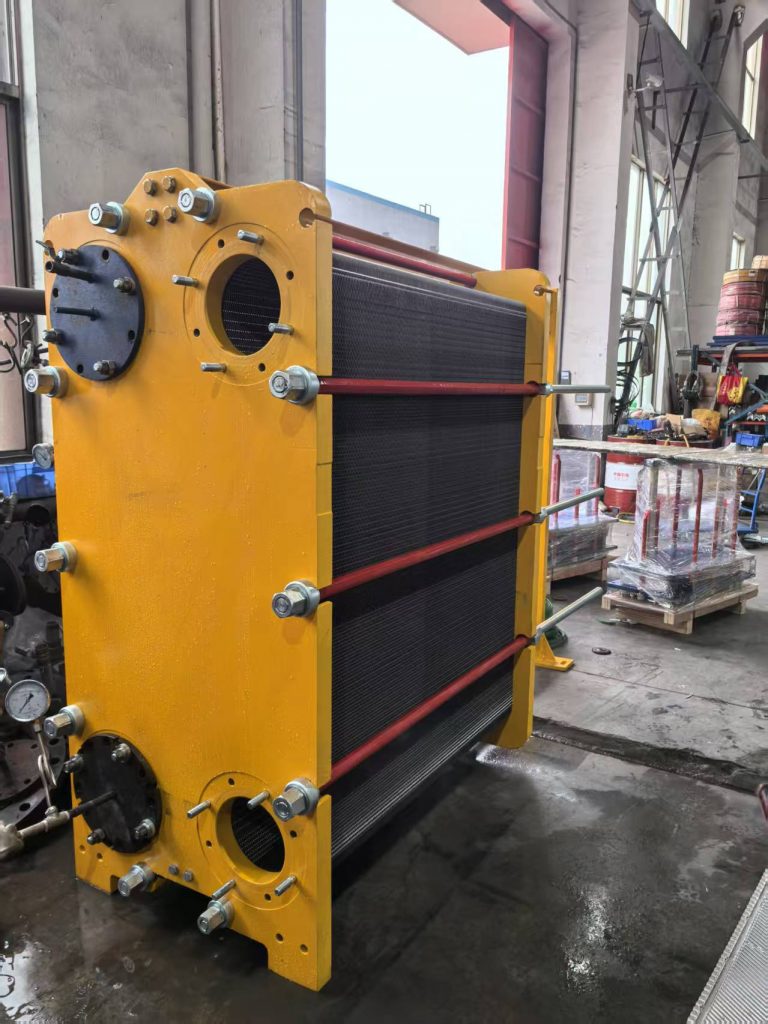When to Choose Welded plate heat exchanger?
You choose a Welded Plate Heat Exchanger when your application demands the efficiency and compactness of a plate design but operates under conditions that are too severe for gaskets.
It is the robust, heavy-duty solution that bridges the gap between gasketed plate exchangers and shell-and-tube exchangers.
The Core Decision: When to Choose a Welded Plate Exchanger
Think of a welded plate exchanger in the following scenarios, which we can summarize with the acronym “H-CAT”:
- High Pressure & Temperature
- Corrosive or Aggressive Media
- Abrasive or Fouling Fluids (where gasketed units fail)
- Thermal Stability & Reliability
Let’s break down each of these scenarios in detail.
1. For High Pressures and Temperatures
Gaskets are the weak link in a standard plate heat exchanger. Welded units eliminate this limitation.
- Pressure: Welded plate exchangers can handle pressures well above 30 bar (450 psi), with some designs capable of over 100 bar (1500 psi). This far exceeds the capability of gasketed models.
- Temperature: They can operate at temperatures exceeding 400°C (750°F), as they are not constrained by the thermal limits of polymer gaskets.
Typical Applications: High-pressure steam condensers, gas processing, high-duty process heating/cooling in chemical plants.
2. For Corrosive, Aggressive, or High-Purity Media
This is a two-fold advantage:
- Resistant to Aggressive Fluids: Many chemicals, solvents, and refrigerants (like ammonia) will degrade or swell standard gasket materials (NBR, EPDM). A fully welded construction contains these fluids without risk of gasket failure.
- Prevents Fluid Contamination: Since there are no gaskets in contact with the fluid, there is no risk of gasket material leaching into the process stream or the gasket being degraded by it. This is critical for high-purity applications in the pharmaceutical and food & beverage industries.
Typical Applications: Ammonia refrigeration systems, chemical reactors, pharmaceutical pure water (WFI) systems, and processes involving strong solvents.
3. For Abrasive or Heavy-Fouling Fluids (Where Gasketed Units Fail)
While not suitable for slurries with large particulates, welded plate exchangers handle certain challenging fluids better than gasketed types.
- Abrasion Resistance: The welded plates are more robust than delicate gaskets and can handle fluids with fine, abrasive particles that would erode or cut gaskets.
- Cleanability: While not as easy to clean as a gasketed unit, many fully welded exchangers can be cleaned chemically (CIP – Clean-in-Place). Furthermore, a specific type called a “double-wall” welded exchanger or a “wide-gap” welded exchanger is designed for fluids with fibers or small particles that would clog a standard plate channel.
Typical Applications: Pulp and paper stock, glycol solutions with contaminants, fine catalyst slurries, and geothermal brines.
4. When Absolute Reliability and Thermal Stability are Critical
The welded construction provides a leak-proof, robust unit that is highly resistant to pressure surges, thermal cycling, and vibration.
- No Maintenance Risk: There are no gaskets to inspect, re-torque, or replace. This eliminates planned downtime for gasket maintenance.
- Longer Lifespan: In the correct service, a welded plate exchanger will have a much longer operational life than a gasketed unit exposed to harsh conditions.
- Safety: For toxic, flammable, or expensive fluids, the superior containment of a welded plate is a major safety and economic advantage.
Typical Applications: Offshore platforms, nuclear power systems, and processes involving hazardous chemicals.
